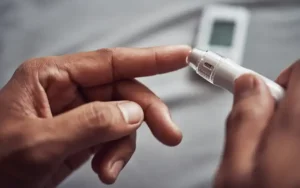Sticking to Statins
Heart disease is deadly. It caused one out of every three deaths in the United States in 2007. It is also expensive. The direct and indirect costs of cardiac disease and strokes are estimated to be over $400 billion.
The good news is that cardiac disease can be managed using medication. Statins – widely available and immensely effective – are the leading treatment option. But here’s the thing: statins are only effective when used properly. Despite the enormous health benefits of statins, people do not always get onto statins and use them as regularly as they need to.
Can behavioral nudges improve these outcomes, getting more people on the drugs they need and getting them to stick to the regimens their doctors prescribe? ideas42 partnered with the Medicaid Leadership Institute and a team from the Oklahoma Health Care Authority’s Medicaid program (SoonerCare) to find out. We targeted a little under 2,500 Medicaid enrollees diagnosed with Type II diabetes, a major predictor of cardiac disease, who did not have a paid claim for a statin medication in 2009, for a randomized controlled trial where we tested a small financial incentive (a $5 gift card) and contrasted it with a suite of behavioral interventions.
Everyone in the target population received a letter encouraging them to call their doctor to arrange a cholesterol check, and to discuss a statins prescription. Those receiving only a basic letter served as our control group. One treatment group also received a $5 gift card with their letter, and were told to activate it after receiving an appointment. For a second group, the letter included a suite of behavioral nudges that have been effective in other domains, such as more salient description of the consequences of remaining untreated and post-it note reminders. A third treatment group received both the gift card and the “nudge suite” letter.
In this preliminary pilot, the nudge treatment produced the greatest increase in statins prescriptions —a 78% increase over the control group – suggesting that further work in improving communications with this high-risk vulnerable population has the potential to produce substantial increases in adherence and improvements in outcomes at minimal cost.
Interested in learning more about this work applying behavioral science to a crucial social problem? Reach out to us at info@ideas42.org or tweet at @ideas42 to join the conversation.









